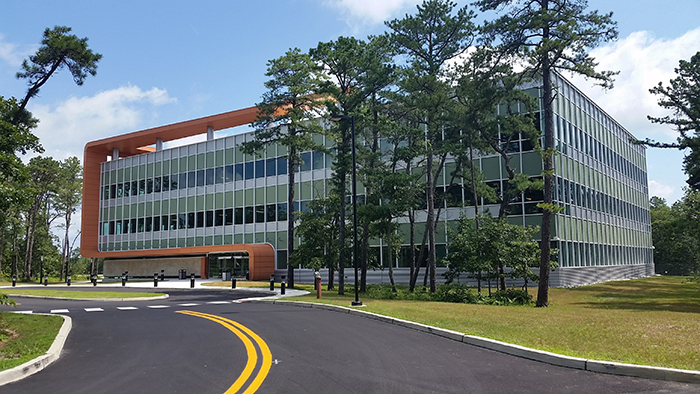The National Aerospace Research & Technology Park (NARTP) was awarded a $2.249 million congressionally directed spending request, sponsored by Senators Menendez and Booker, to advance development and testing of autonomous devices that can perform routine, recurring, labor-intensive activities on military and civilian airfields.
The initial phase of the Airfield Autonomy Initiative (AAI) will focus on automated lawn mowing, foreign object debris sweeping, and perimeter patrol. Devices used for these purposes will enable more efficient and reliable ground operations and increase the safety of workers, equipment, and aircraft. They will also reduce the operating costs and labor required to complete a variety of maintenance, security, and operational tasks.
According to Howard J. Kyle, President/CEO, the NARTP will work in cooperation with the USAF Air Mobility Command, the National Center for Manufacturing Sciences, the FAA William J. Hughes Technical Center (WJHTC), the Atlantic County Economic Alliance, and private industry, to pioneer development and demonstration of the first-ever, dual-use, airfield-specific autonomy command and control (C2) systems. “We are extremely grateful to Senators Menendez and Booker for their support for both this project and the NARTP,” stated Kyle.
Mark Loeben, Chairman, NARTP Board of Directors and a retired USAF Major General and current American Airlines Captain, noted that “Developing and successfully demonstrating vigorous C2 systems that can safely operate, track, coordinate, communicate, navigate, and deconflict multiple types of automated devices from a variety of technology providers is a critical step forward in increasing airport efficiencies and reducing costs. AAI technologies are expected to grow into a multimillion-dollar industry with worldwide demand. I am pleased that the NARTP will be helping to facilitate their development for both military and civilian airfields.”
While some automated technologies are currently available, what needs to be developed are software systems that weave together a comprehensive operating system that would enable these devices to be safely incorporated into airfield operations in a manner that is both scalable and replicable.
According to Kyle, the FAA is working with USAF Air Mobility Command on airport autonomy efforts to prepare for standards and certifications of the research developed by industry. “The goal is for all partners to build relationships that ensure the United States remains the leader in aviation while providing the safest, most efficient aerospace systems in the world,” he said. “It will also help overcome personnel shortages that impede both the military and civilian operators while enabling operators to focus on more critical, hands-on tasks that boost aircraft turnaround times.”
The AAI project will use a “crawl, walk, run” approach through a multiphase process that ensures the safety and integrity of autonomous systems, starting with devices that are furthest removed from operational aircraft (such as automated lawnmowers) and gradually advancing over time to devices that come into full contact with aircraft.
The NARTP is a key element of New Jersey’s only state-recognized Aviation Innovation Hub, located in Egg Harbor Township, which links the park to the WJHTC and Atlantic City International Airport (ACY), a Smart Airport Testbed.
Planned demonstrations of C2 systems will focus on uncovering control and safety unknowns in a dynamic airfield environment at Joint Base McGuire-Dix-Lakehurst as well as ACY starting in Spring 2023.

The NARTP is catalyzing innovation with an ecosystem of partnerships and harnessing the power of collaboration, facilitating research and development, innovation, and commercialization of emerging aviation technologies. NARTP is located on a 58-acre parcel adjoining the Federal Aviation Administration William J. Hughes Technical Center, an internationally recognized facility dedicated to research, development, and sustainment of the National Airspace System; and the Atlantic City International Airport, a designated Smart Airport Research Testbed Facility. NARTP tenants are performing leading research in Uncrewed Aerial Systems/Advanced Air Mobility (UAS/AAM) focusing on the safety implications of nascent UAS operational concepts, their testing and certification, as well as the emerging technologies needed to support the development of new regulatory standards.


